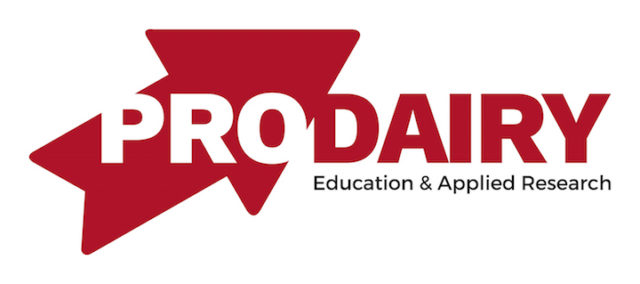21. Increasing water intake: Cooling cows from the inside out
Unrestricted access to clean water is a crucial component of dairy cattle nutrition, health and performance, especially during heat stress. Location and design of water stations should consider cow numbers, stocking density, production level and natural behaviors to encourage optimum water intake. Cows cannot remain fully hydrated if water intake is compromised by lack of access, flow or quality.
Q. What is the most important change/improvement a producer can make to increase water intake in the summer months?
A. “The most important tip is to add water space, for example in the return alley. The average dairy is below the recommended 3.5 inches of water space per cow, especially with overstocking of pens. It is equally important to clean the waterers weekly during summer.”
—William Seymour, Novus International
22. Questions producers should ask their nutritionists given the current state of feed inventory in the U.S.
Asking the right questions is critical during times of market volatility and supply chain disruptions. Taking advantage of your current feed inventory and the flex-fuel capability of your cows is essential for your business. If you are not challenging your nutritionist and evaluating your feed management practices, you could be leaving feed and money on the table.
Q. Why do you think this piece resonated with readers?
A. “Disruption in global markets and supply chains has led to a lot of volatility in our heavily byproduct-based industry the last few years. Initially, many felt they were just subject to those headwinds, but as volatility continued, more and more dairies are now assessing their risks, managing around them and addressing opportunities to lower input costs with short- and long-term solutions.”
—Mac Campbell, Cargill
23. Hydroponic forages in transition cow diets
Hydroponic wheat positively affected rumination both during the close-up period and early lactation in an on-farm study. There was also a positive effect on milk production during the first three months of the lactation.
Q. How do hydroponic forages play a part in the future of dairy sustainability?
A. "When we think about the term 'sustainable future,' a sensible use of land and water are undoubtedly the first thoughts that come to mind. Hydroponically produced forages combine both increased productivity in less land with the optimization of water resources. Water is increasingly becoming a scarce resource in vast parts of the U.S. and the world, and the growth of forages under controlled conditions will secure high-quality feed while minimizing its environmental impact."
—Alvaro Garcia, Dellait Animal Nutrition and Health
24. Assessing ventilation in calf barns
Whether the barn is naturally ventilated, supplemented with a PPTV system or mechanically ventilated, getting fresh air into and out of the barn while keeping calf numbers appropriate are the fundamentals of a successful ventilation system.
Q. What are the first three steps a dairy producer can take to determine if the ventilation in their calf barn is adequate or if they need to make some of the changes discussed in the article?
A. “Checking the stocking density of the barn is the first area to focus on when it comes to barn ventilation. If the barn is overstocked, air quality suffers and efforts to compensate for an overstocked barn, such as increasing the ventilation rate, often fall short when compared to having an appropriately stocked barn to begin with – not to mention improved hygiene and bedding quality when animal numbers are reduced. Next, determine if the barn ventilates well year-round, providing the minimum four air changes per hour (ACH) in the winter without a draft. This can be achieved with a supplemental positive-pressure tube ventilation system and with open eaves and a ridge in a naturally ventilated barn. Lastly, check that the barn has sufficient openings for fresh air to enter the barn and calf pens, especially in the summer when we want to see air exchange rates of about 40 ACH. This high air exchange rate is achieved when the barn’s sidewalls are open to capture prevailing winds.”
—Courtney Halbach, Dairyland Initiative
25. Key puzzle pieces that impact first-lactation milk production
Like pieces in a puzzle, every single step, no matter how small, matters to building a complete and productive replacement heifer. These pieces can be broken into three main stages: the pre-weaning piece, the pre-pubertal piece and the freshening piece. This means taking steps to ensure calf health from day one and providing good nutrition at every stage.





